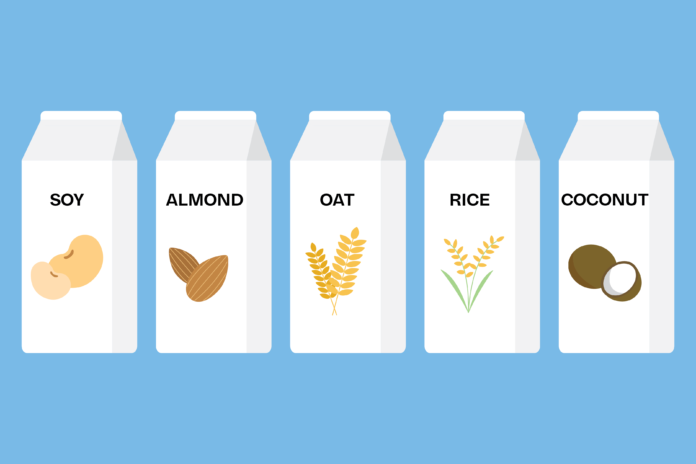How environmental consciousness edges out the dairy industry
When asked her thoughts on cow’s milk, Joelle Page, a second-year psychology major, said: “It’s disgusting. All I can think about is the pus and blood and dirt, God, I can’t believe I ever drank it. And I know how the process is, like all the steps it goes through to make it edible. But that doesn’t mean I avoid it. It’s hard to not eat cheese and yogurt and dairy products, but milk is disgusting.”
It’s no secret that milk’s popularity has been on the decline for a while. With the public’s increasing emphasis on sustainability paired with growing diet consciousness, milk has been declared the enemy. More and more people remove it from their diets every day. Eager to fill the hole milk has left, a booming new industry has popped up. Three students explain why they explore dairy alternatives.
“I was always a little lactose intolerant,” said Sarah Gougeon, a third-year plant science major, as she ruefully recalled the moment she knew her diet had to change. “In junior year of high school, I went to Ecuador and got a parasite. Then I was really lactose intolerant.”
Despite her unusual circumstance, she shared similar experiences with the other interviewees. Savannah Pluma, a second-year engineering and biological sciences major, cites a cocktail of lactose intolerance and budding veganism as the reason she dropped milk.
“I experimented with alternatives for a while, but educating myself about veganism pushed me to really […] make the change,” Pluma said.
While much of their reasoning for making the switch was the physical (bolating, gas, nausea) aspect, all three said that ethical considerations were their driving force.
“I watched this documentary that called milk ‘baby cow growth fluid,’” Page said. “If you think about it, it’s really not meant to be consumed by humans.” Gougeon, who is not vegan, shared similar thoughts. “It’s easy to forget, they forcibly impregnate the cows to steal their milk. It happens their whole lives.” Pluma looks at the dairy industry as a small part of the bigger picture. “Regular milk is delicious. It might be really good in coffee, but this is the future of our world. I’m trying to prioritize the earth.”
One of the more difficult factors of adapting to milk alternatives is figuring where and how to incorporate them into one’s diet. Some, like Page, see it as a full on substitute.
“You can use it in pretty much anything you would use regular milk in,” Page said. “Like smoothies or cereal.”
Simple dishes that don’t require baking are common places to try milk alternatives, helping new consumers adjust to the altered taste. Gougeon is more particular with how she uses the alternatives. She explained her detailed process:
“Anyone who knows me knows this: almond milk for cereal, soy milk for cooking, oat milk for coffee,” Gougeon said.
Pluma is more experimental with her decisions.
“I go through phases, right now it’s been months since I had soy milk, but now I need that sweet taste, other times I want some yummy thick liquid (oat milk), sometimes I want that watery deliciousness of almond milk,” Pluma said. “I’m a layered woman.”
With so many types of milk alternatives available, picking the drink you enjoy is critical. There is a process of trial and error in figuring out what works for you. Ethics plays a large role, but so does nutrition and price.
“I used to pick based on nutritional values, so I drank a lot of soy milk because it has so much protein. Now, I just drink whatever’s around me. I like milk that tastes good, I don’t really care if it gives me nutrition or not,” Pluma said.
For Page and Gougeon, the price tag is more of a deal breaker than the nutrition label.
There are obvious struggles when you take milk out of your diet, but with non-dairy options increasing in popularity so rapidly, it’s easier to adjust. Pluma gave some encouraging advice for newcomers:
“Sometimes it’s hard to find milk in public, in coffee stores and what not. Now, obviously, everyones drinking it—you know Dunkin just added oat milk to their menu,” Pluma said. “Big things!”
Page shared that it “gets easier with time.”
The transition from cow’s milk to a milk alternative may seem daunting, but these students agree the pros outweigh the cons. Invest in a more environmentally conscious way to eat and drink.
Overall interviewees’ milk alternative rankings:
SOY: ★★★½
ALMOND: ★★★
OAT: ★★★★½
RICE: ★½
COCONUT: ★
Written by: Livvy Mullen — arts@theaggie.org





